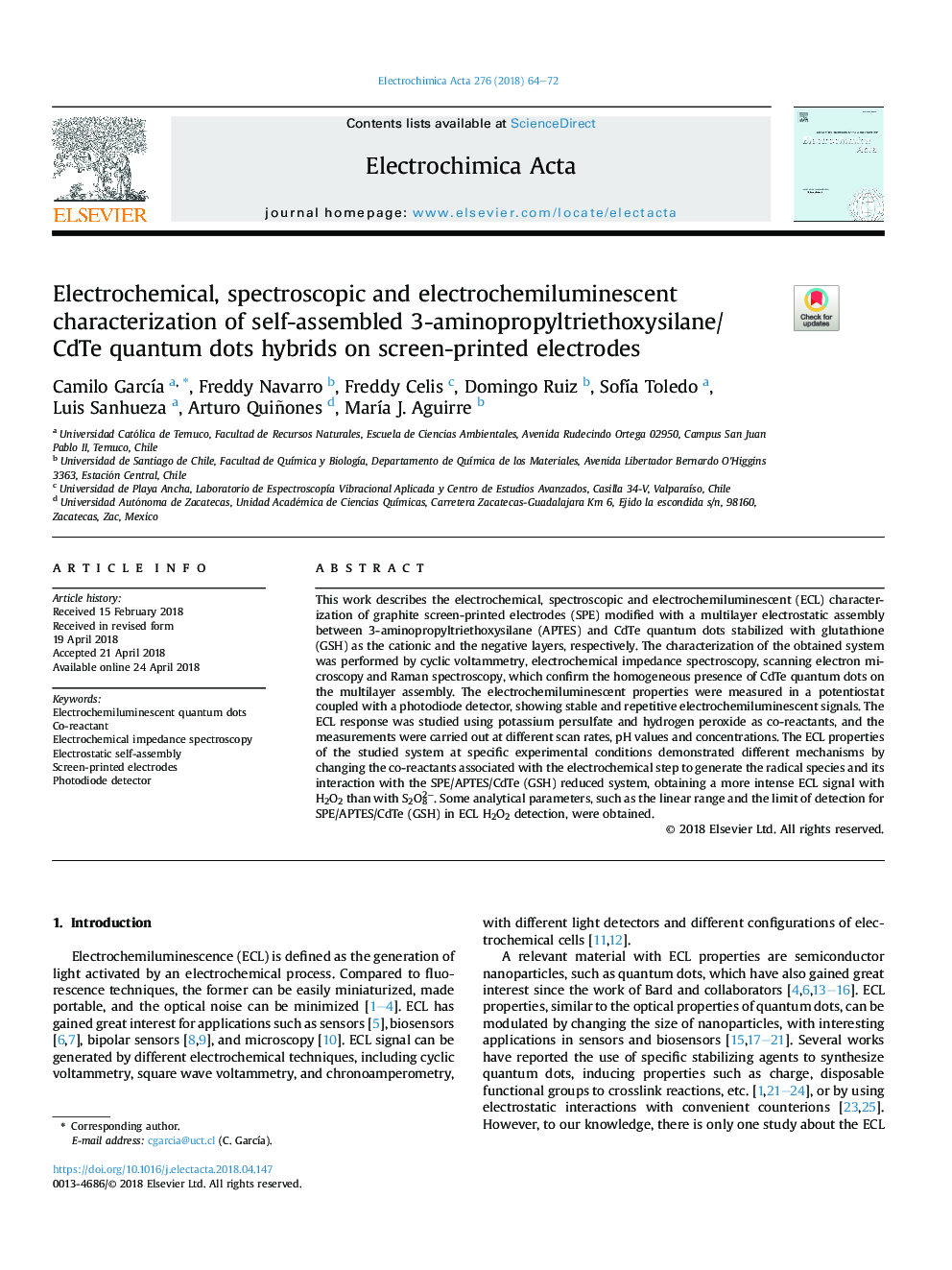| Article ID | Journal | Published Year | Pages | File Type |
|---|---|---|---|---|
| 6602804 | Electrochimica Acta | 2018 | 9 Pages |
Abstract
This work describes the electrochemical, spectroscopic and electrochemiluminescent (ECL) characterization of graphite screen-printed electrodes (SPE) modified with a multilayer electrostatic assembly between 3-aminopropyltriethoxysilane (APTES) and CdTe quantum dots stabilized with glutathione (GSH) as the cationic and the negative layers, respectively. The characterization of the obtained system was performed by cyclic voltammetry, electrochemical impedance spectroscopy, scanning electron microscopy and Raman spectroscopy, which confirm the homogeneous presence of CdTe quantum dots on the multilayer assembly. The electrochemiluminescent properties were measured in a potentiostat coupled with a photodiode detector, showing stable and repetitive electrochemiluminescent signals. The ECL response was studied using potassium persulfate and hydrogen peroxide as co-reactants, and the measurements were carried out at different scan rates, pH values and concentrations. The ECL properties of the studied system at specific experimental conditions demonstrated different mechanisms by changing the co-reactants associated with the electrochemical step to generate the radical species and its interaction with the SPE/APTES/CdTe (GSH) reduced system, obtaining a more intense ECL signal with H2O2 than with S2O82â. Some analytical parameters, such as the linear range and the limit of detection for SPE/APTES/CdTe (GSH) in ECL H2O2 detection, were obtained.
Keywords
Related Topics
Physical Sciences and Engineering
Chemical Engineering
Chemical Engineering (General)
Authors
Camilo GarcÃa, Freddy Navarro, Freddy Celis, Domingo Ruiz, SofÃa Toledo, Luis Sanhueza, Arturo Quiñones, MarÃa J. Aguirre,
